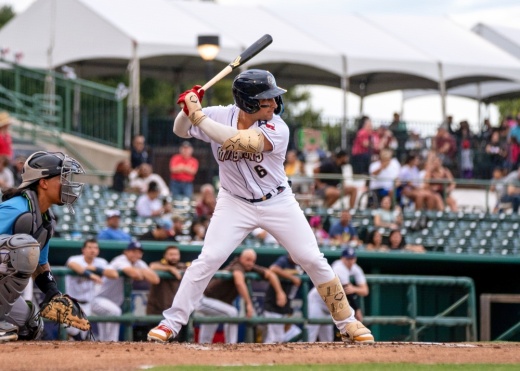The plan to build a new $160 million stadium in downtown San Antonio has moved forward ahead of Major League Baseball’s Oct. 15 deadline.
The agreement between the city, county, developers Weston Urban and owners Designated Bidders lays out a plan to build a multipurpose facility located in the San Pedro Creek Park District.
Designated Bidders board member Bob Cohen said the plan conforms to MLB standards.
“Without a facility that complies with requirements set forth by Major League Baseball, our MLB affiliation is at risk, and that risk is real,” Cohen said.
The San Antonio ISD board of trustees voted unanimously to approve the amended terms introduced by Superintendent Jaime Aquino for the negotiation and sale of the Camaron Street property for the construction of a new downtown Missions Baseball stadium during its Nov. 18 meeting.
The updated terms include five elements that are designed to assist the district and its residents. Aquino said as one of the city’s largest employers, the sale must be in line with the district’s values and be beneficial to residents and staff. He also noted that as of Nov. 18, the district had not received a proposal that aligns with its values.
About the project
San Antonio City Council voted Sept. 12 and the Commissioners Court voted Oct. 8 to approve the memorandum of understanding. The stadium would accommodate about 7,500 people and is part of the overall ballpark project, which lays out four phases of private development downtown.
“We’ve been trying to energize and redevelop downtown for some years. By moving [the stadium] to a more dense location, there’s opportunity for businesses to develop around the ballpark,” District 10 council member Marc Whyte said.
The San Pedro Creek Development Authority, a new government corporation, will oversee the development and management of the district. The developer is planning for four phases, but only two are agreed upon. It’s estimated the first two phases will create $575 million in taxable value.
Construction of the ballpark will begin after breaking ground on Phase 1 and is expected to be completed in time for opening day in April 2028.
Funding the project
Whyte said it’s an integral part of the MOU that the funding for this project will not be taken from general funds or increase residents’ property taxes.
“This [project] would have been a nonstarter if it would have taxed our general population, or if we would have been using general funds,” Whyte said.
Instead, the SPCDA will issue funds through bonds granted only if the developer breaks ground.
Cohen said developers are ready to break ground.
“The initial phase of private development is ready to get underway, [and is required] before there can be issuance of debt to build the ballpark,” Cohen said.
Funding will also be granted from the Houston Street tax increment reinvestment zone, which is an instrument used to support economic development and building infrastructure within a set geographic boundary.
The bonds include a pledge of revenue from the Houston Street TIRZ and would be primarily repaid through team proceeds and taxable private development near the stadium.
How it happened
In 2022, Designated Bidders purchased the Missions from “absentee” owners. Composed of 30 owners, the group includes local civic and business leaders, San Antonio Spurs alumnus David Robinson and family, and Ryan Sanders Baseball.
Cohen said the group is composed of local owners dedicated to maintaining San Antonio’s 136-year baseball tradition.
The purchase by Designated Bidders includes a professional development license, which requires ownership to provide ballpark facilities that meet certain criteria. Nelson W. Wolff Municipal Stadium, the Missions’ home since 1994, received the lowest rating of all MLB stadiums and required major renovations to conform to these standards.
Cohen said the renovations needed to bring the stadium into compliance with MLB standards required a heavy investment.
“It doesn’t make economic sense to put the required resources into an old facility that would have a short shelf life,” Cohen said.
SAISD board trustee Sarah Sorensen said that the board’s proposal is the first time monetary compensation has been discussed.
“Initially, there was an offer that they would provide 250 parking spaces at a new garage that would not be owned by the district,” Sorensen said.
The SAISD proposal includes:
- Appointment of the superintendent or designee to a seat on the Houston Street tax increment reinvestment zone, or TIRZ
- Using TIRZ funds to construct an estimated $45 million building for the Advanced Learning Academy
- Providing necessary parking with safe passage to the Fox Tech campus
- Providing $400,000 per year to compensate for loss of interest that could have been earned by SAISD if SAISD was to have sold the property through a sealed bid process
- Guaranteeing a minimum of 1,250 units of affordable housing in SAISD attendance zones, with more than 500 two-to-three-bedroom units set at 60%, 50% and 30% of the federal guidelines for area median income
Learn more
Local government officials, team ownership and developers are still negotiating multiple aspects of a final agreement. This includes an economic development agreement to be completed in 2024.
A team lease, a developer agreement and a TIRZ funding agreement are estimated to wrap up in 2025.
The first two phases of private development will be guaranteed by the Missions and consist of a two-year rolling line of credit as well as a second line of credit from a subset of the ownership.
Designated Bidders’ equity contribution of $34 million represents approximately 86% of the funding for the stadium, with the remaining 14% to be taken from the Houston Street TIRZ.
Bonds will be issued no later than November 2025.
Additional MOU provisions:
- Missions will develop a youth program that includes a set number of free tickets per year for youth groups and teams
- Employees will receive city minimum wage of $18/hour
- Soap Factory tenant relocation assistance
- The city and county each have access to the ballpark 5 days a year
- A $200,000 annual contribution from the Missions to support local initiatives for children and homeless veterans
- $65.9 million in new property tax revenue through phases 1 and 2 for The University of Texas Health Science Center at San Antonio
- $110 million in property tax collections projected through 2025 for San Antonio ISD debt service
- $4.2 million in new property tax revenue for San Antonio River Authority from phases 1 and 2





